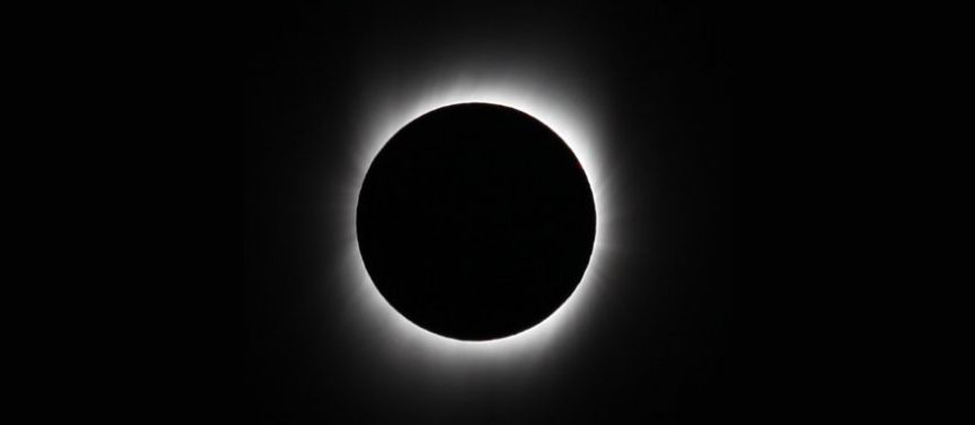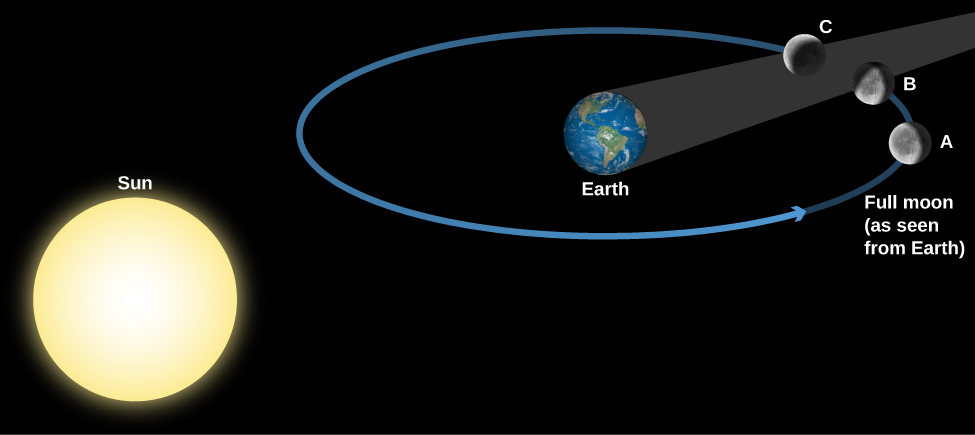| << Chapter < Page | Chapter >> Page > |
As the bright disk of the Sun becomes entirely hidden behind the Moon, the Sun’s remarkable corona flashes into view ( [link] ). The corona is the Sun’s outer atmosphere, consisting of sparse gases that extend for millions of miles in all directions from the apparent surface of the Sun. It is ordinarily not visible because the light of the corona is feeble compared with the light from the underlying layers of the Sun. Only when the brilliant glare from the Sun’s visible disk is blotted out by the Moon during a total eclipse is the pearly white corona visible. (We’ll talk more about the corona in the chapter on The Sun: A Garden-Variety Star .)

The total phase of the eclipse ends, as abruptly as it began, when the Moon begins to uncover the Sun. Gradually, the partial phases of the eclipse repeat themselves, in reverse order, until the Moon has completely uncovered the Sun. We should make one important safety point here: while the few minutes of the total eclipse are safe to look at, if any part of the Sun is uncovered, you must protect your eyes with safe eclipse glasses Eclipse glasses are available in many planetarium and observatory gift stores, and also from the two main U.S. manufacturers: American Paper Optics and Rainbow Symphony. or by projecting an image of the Sun (instead of looking at it directly). For more, read the How to Observe Solar Eclipses box in this chapter.
A lunar eclipse occurs when the Moon enters the shadow of Earth. The geometry of a lunar eclipse is shown in [link] . Earth’s dark shadow is about 1.4 million kilometers long, so at the Moon’s distance (an average of 384,000 kilometers), it could cover about four full moons. Unlike a solar eclipse, which is visible only in certain local areas on Earth, a lunar eclipse is visible to everyone who can see the Moon. Because a lunar eclipse can be seen (weather permitting) from the entire night side of Earth, lunar eclipses are observed far more frequently from a given place on Earth than are solar eclipses.

An eclipse of the Moon is total only if the Moon’s path carries it though Earth’s umbra. If the Moon does not enter the umbra completely, we have a partial eclipse of the Moon. But because Earth is larger than the Moon, its umbra is larger, so that lunar eclipses last longer than solar eclipses, as we will discuss below.
A lunar eclipse can take place only when the Sun, Earth, and Moon are in a line. The Moon is opposite the Sun, which means the Moon will be in full phase before the eclipse, making the darkening even more dramatic. About 20 minutes before the Moon reaches the dark shadow, it dims somewhat as Earth partly blocks the sunlight. As the Moon begins to dip into the shadow, the curved shape of Earth’s shadow upon it soon becomes apparent.

Notification Switch
Would you like to follow the 'Astronomy' conversation and receive update notifications?